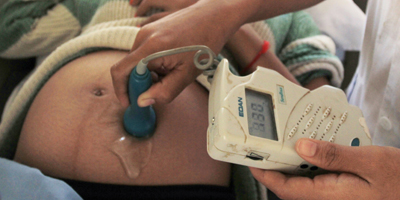Research Brief
Impact of Aid for Health and Education on Gender Equity and Human Development
- Initial high human development index scores and per capita income have a strongmimpact on the outcomes of aid to the health and education sectors.
- An increase in the share of the government budget allocated to education and health improves overall human development.
- Aid appears to be effective in reducing maternal mortality as well as the gender gap in youth literacy, regardless of initial conditions.
While developing countries have made progress in human development since the turn of the century, many are still lagging behind in important development goals such as education, health, nutrition, and access to clean drinking water and modern sanitation.
Moreover, large gender gaps remain along many dimensions, including access to education, health, and other social services. This is particularly troublesome as improvements in health and education for women have been shown to correlate with large economy-wide productivity gains and have a substantial positive impact on the well-being of children.
However it is also important to note that while targeted aid at the micro level tends to produce positive results, this does not always lead to improvements in outcomes at the macro level. Consequently, it is important to consider the impact that aid aimed at particular sectors has on human development and gender equality at the macro level. Using OECD-DAC data it is possible to disaggregate gains in human development and gender equity from targeting particular social sectors such as education or health in the allocation of foreign aid.
 The importance of initial conditions
The importance of initial conditions
The overall impact of aid on human development, as measured by the human development index, depends significantly on initial conditions in the country in question. Specifically, high initial human development is associated with higher human development in subsequent years. Countries with a low level of human development and low per capita income receive comparatively more foreign aid, but they experience less development relative to the amount received. This seems to be explained by structural factors, such as lack of infrastructure and human capacity, which constrain the growth and development of low-income countries.
Outcomes in health and education
Not surprisingly, higher initial levels of human development and per capita income are also associated with better outcomes in both the health and education sectors. In addition, an increase in the share of public spending going to health and an increase in the proportion of the population with access to improved water sources are associated with an improvement in health outcomes. Likewise, a lower risk of corruption is associated with better health outcomes.
Similarly, an increase in aid to education as a share of total aid is associated with improvements in education outcomes. However, simply increasing the budgetary allocation to the education sector does not seem to have a positive effect. Greater government stability is associated with improvements in education outcomes.
Specific gender-related outcomes
Increased allocation of foreign aid to the health and education sectors also improves gender-specific outcomes. In particular, maternal mortality appears to significantly decline as more aid is allocated to the health sector. Similarly, an increase in total aid as well as an increase in the share of total aid that goes to education both contribute to a reduction in the gender gap in youth literacy.

Policy implications
Developing countries are likely to reap substantial benefits from increased, targeted allocation of foreign aid to health, education and social infrastructure, especially clean drinking water and improved sanitation. Given that reductions in gender inequality can lead to significant improvements in the well-being of children and in overall household welfare, targeting foreign aid to health and education can be a good strategy for improving household well-being.
The importance of public expenditure on health and infrastructure for these outcomes suggests that there is a need to increase domestic financial capacity to finance social sector expenditures. For many developing countries, this means targeted aid, as aid is a significant source of financing for public expenditure in these sectors. However, governments can make even faster progress towards achieving human development and gender equity goals if they can mobilize additional domestic resources to complement aid allocation to social sectors.
- Donors looking to improve women’s well-being should target foreign aid towards health and education.
- Governments should attempt to mobilize domestic resources to complement foreign aid.
- Aid project evaluations should measure progress relative to the starting point of each individual country to take account of initial conditions.
Finally, the findings indicate that evaluations of aid projects must consider initial conditions in a country in order not to underestimate development outcomes. Rather than measuring absolute progress towards the achievement of outcomes on an international scale, evaluations should be country-specific, and should measure progress relative to the starting point of each individual country.
 Join the network
Join the network